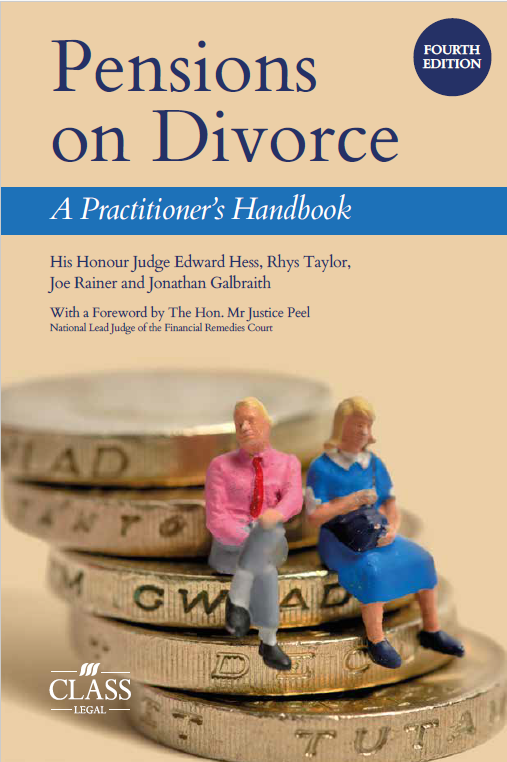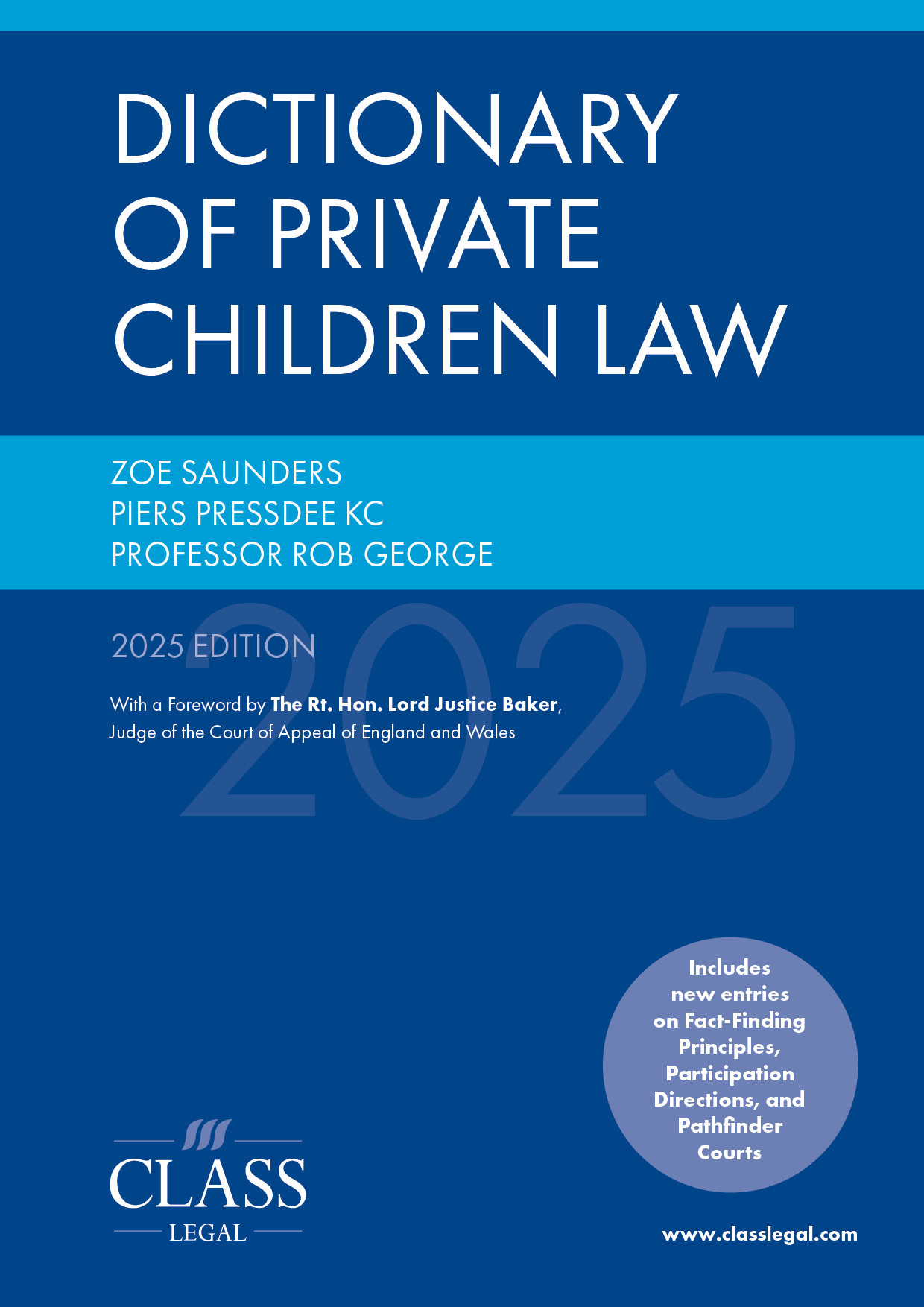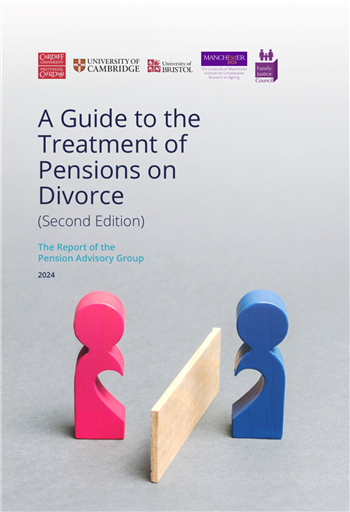
A 40-Year Revolution in Financial Remedies
Published: 16/10/2024 11:11

My subject today is revolution. Don’t worry. I am not advocating a take-over of the country by Tommy Robinson or Piers Corbyn. I am talking about the fundamental transformation of financial remedy work since I undertook my first ever case on 19 July 1983 in the Edmonton County Court, just over 41 years ago.
It was an application for periodical payments, which could, of course, still be heard today. Everything else about it was entirely different to the position now. It was conducted in a County Court, not the Family Court, although, in fairness, it would have been the same judge, in the same room, in the same building. It was called an application for ancillary relief, not financial remedies, it being ancillary to the main matter of the divorce decree. There would have been no position statements; skeleton arguments; chronologies; schedules of issues; or indeed any documents to speak of other than a couple of affidavits that were almost certainly entirely irrelevant to the issue that had to be determined. The judgment, as with all judgments then, would have been delivered orally. The Registrar (not District Judge) would have drafted the order. There would have been no MIAM; no First Appointment; and no FDR.
Chambers and solicitors’ offices were also entirely different. In Chambers, there was a paper diary. There were four phone lines. There was not a computer in sight. There was a telex machine, but I believe it was only ever used by our then Head of Chambers, Joseph Jackson QC to receive instructions from Hong Kong. Fax machines had not been invented. There was a pretty basic photocopier, but all letters and documents were typed on typewriters, using carbon paper to produce more than one copy. In consequence, briefs to counsel were mercifully small; usually folded and tied together with pink tape. The brief fee was written by the clerk onto the brief and the brief had to be endorsed at the end of the case with the outcome or you would not get paid. The internet was the stuff of science fiction. An email was unheard of. If you wanted a reply to an urgent letter, it would almost certainly take a week at least to arrive.
It was only in 1986 that one Nicholas Mostyn told me we had to get personal computers. They came from IBM. Mine arrived in a huge box and remained unopened in my room for a couple of months, before I plucked up the courage to start to set it up. It used a DOS operating system but there was still no internet and, at least so far as my use of it was concerned, it was basically a glorified word processor. The internet only came several years later, using a dial-up modem that made a screeching noise whenever you turned it on.
I do not believe anyone then would have envisaged a world of video hearings; electronic bundles; instant communications worldwide; or correspondence by email, written by artificial intelligence.
But most importantly, what of the law itself? In one sense, the 1973 Matrimonial Causes Act was very similar to the one in force today. The powers of the court were essentially the same, other than in relation to pension sharing and legal services orders. Prior to the Matrimonial and Family Proceedings Act 1984, s 25 required the court to have regard to all the circumstances of the case, whilst, as now, paying regard to specific matters, such as ‘income, earning capacity, property and other financial resources’; ‘financial needs, obligations and responsibilities’; ‘standard of living enjoyed before the breakdown of the marriage’; ‘age of the parties; the duration of the marriage’; ‘any physical or mental disability of the spouses’; contributions; and ‘benefits lost on dissolution of the marriage’. That all sounds very familiar; but there was a tailpiece:
‘and so to exercise those powers as to place the parties, so far as it is practicable, and having regard to their conduct, just to do so, in the financial position in which they would have been if the marriage had not broken down and each had properly discharged his or her financial obligations and responsibilities to each other.’
Of course, it could, with justification, be said that, in the vast majority of cases, this aspiration was pie in the sky. If assets are being divided, how can you be placed in the same position as if the marriage had not broken down and the assets not divided? Note as well that there was no obligation to achieve a clean break and the welfare of the children was not mentioned in that section at all.
How was it all interpreted? The 1973 Court of Appeal case of Wachtel v Wachtel was the most significant decision. Lord Denning was of the view that an appropriate starting point for an award would be to give the wife one-third of the capital and one-third of the income. The justification in relation to income was one-third to each party and one-third for the children. Remember, that tax relief was available on periodical payments orders. This was of vital importance. In the late 1970s, the top rate of tax was a staggering 83% and there was a 15% unearned income surcharge on top of that. In one year, a desperate Chancellor, Denis Healey, even increased the highest burden to 103%. This undoubtedly affected the approach of everyone. High earning barristers, such as Joe Jackson and Jeremy Tatham, ran their Rolls Royce cars as business expenses to reduce their taxable income.
Thereafter, ‘needs’ became the watchword and, as late as 1996, the Court of Appeal was clear that there was a ceiling on ancillary relief awards. In the case of Dart v Dart, the Wife received £10m out of the Husband’s assets of around £400m, admittedly all inherited/received before the marriage. Even then, however, I remember some commentators saying that, by providing for the spouse’s reasonable requirements, generously assessed, the law of England and Wales was a generous one to divorcees, particularly as it was impossible to oust the jurisdiction of the court by a pre-nuptial agreement.
So how did the law change so dramatically? Parliament did make a few amendments to s 25 in the 1984 Family and Matrimonial Proceedings Act, but there was nothing too fundamental. It is right that the tailpiece in s 25, about putting spouses back in the position they would have been, if the marriage had not broken down, was removed. Whilst the court still had to have regard to all the circumstances of the case, the first consideration became the welfare whilst a minor of any child of the family who has not attained the age of 18. I have to say that I do not think this changed the way the judiciary applied s 25 at all, as the needs of children had always taken centre stage.
As opposed to being mentioned in the tailpiece, ‘conduct’ became a specific factor in s 25(2), but only if it was such that it would be inequitable to disregard it. Whilst I will return to that briefly in due course, we all know that the Supreme Court in Miller/McFarlane confined this, in reality, to cases where the conduct was gross and obvious, to the huge relief of the judiciary, which took the view that it could not cope otherwise. Parliament did require the court to consider the extent to which it would be reasonable to expect a party to take steps to increase their earning capacity, which was broadly welcomed.
The main change, however, in the 1984 Act, was to give prominence, for the first time, to achieving a clean break. A new s 25A imposed a duty on the court to consider, in every case, whether it would be appropriate to terminate financial obligations as soon as is just and reasonable. Moreover, s 25A(2) required a court, making a periodical payments order, to consider whether it would be appropriate to require payments to be made only for such term as would enable the spouse to adjust to the termination of those payments without causing undue hardship. Note that the Act specifically refers to ‘undue’ hardship so there could be hardship, just not undue hardship. I consider that these changes have made a significant difference but have done so over a considerable period of time, rather than immediately on the Act being passed. The clean break has become the overwhelming norm and spousal periodical payments, unlimited in time, an increasing rarity.
The most significant change in the law, however, was undoubtedly judge-led. I am, of course, referring to the sea change in approach commenced by the House of Lords in White v White on 26 October 2000, a fitting way to begin the 21st Century. and since developed further in cases such as Miller/McFarlane. Gone forever was the jurisprudence to be found in Wachtel and Dart requiring a needs-based solution.
It was replaced, for the first time, by the concept of matrimonial property and, as the years passed, a virtual rule that, in the absence of need, there would be an equal division of such matrimonial property, namely property created during the marriage. Indeed, we must not forget the way in which White outlawed discrimination in financial remedy proceedings and redefined ‘contributions’ such that financial contributions no longer had pre-eminence but were the equal of other contributions such as bringing up the family and maintaining the matrimonial home.
Miller/McFarlane reminded us, however, that sharing of the matrimonial property is only one strand of three that the court must consider. Needs remains alive and well, if the claimant’s needs award exceeds the sharing claim, but again the court must never forget that the respondent’s needs must be considered too. The final strand of the three, namely compensation, has of course been confined to a very narrow category of case which can perhaps better be considered under the heading of ‘relationship generated disadvantage’.
Few would argue that these developments were not welcome. Whether it is really appropriate for the judiciary to change the law so fundamentally is an interesting philosophical question that cannot be answered in the limited time available and perhaps can never be answered, but fundamental change to the law has undoubtedly been judge-led. The justification given is, of course, the failure of Parliament to grasp the nettle of changing the law, now over 40 years since passing the 1984 Act.
The other fundamental change in the law over the past 40 years relates to the issue of Nuptial Agreements. Back in the 1980s, it was overwhelmingly the view of the judiciary and practitioners that such agreements were in breach of public policy as you could not oust the jurisdiction of the court. It was not helped by the fact that the vast majority of such agreements at the time simply provided that the economically weaker party, almost always the wife, would get nothing on divorce. Time after time, I remember drafting such an agreement with an accompanying written Opinion telling the husband that it was a complete waste of time and would never be upheld.
And then, in 2010, we had the second sea-change in approach, this time from the Supreme Court, in the case of Radmacher v Granatino, the subject of last year’s case review, so I do not intend to say anything more on that topic now.
So, what of the future? Forty years ago, nobody could possibly have predicted all the numerous changes outlined above. There were, however, some visionaries. Mr Justice Singer, then Peter Singer QC, did advocate for the changes brought about by White v White in a lecture to the Family Law Bar Association at Cumberland Lodge, years before the House of Lords agreed. Lord Wilson of Culworth, in a case called S v S in 1997, in which I was junior counsel for the husband, suggested that there might come a time when pre-nuptial agreements were upheld. Mr Justice Mostyn was always well ahead of the curve in relation to just about everything but certainly in relation to technology. He was, almost single-handedly, responsible for the introduction of virtual hearings at the very beginning of the pandemic when he insisted, despite serious reservations from the Senior Judiciary, that he undertake a five-day Court of Protection case entirely remotely in the first weeks of lockdown. It was a great success and paved the way for the Family Court showing every other area of practice, and the vast majority of foreign jurisdictions, the way to proceed. Thank goodness he did or the backlog in cases would have been unmanageable, and many litigants would have been denied justice by the passage of so much time.
It is, of course, quite impossible to say where we will be in the year 2065. I am not convinced that Artificial Intelligence will be quite the game changer that some predict or fear. Professor Sir Nigel Shadbolt, Principal of Jesus College, Oxford, and Professorial Research Fellow in Computer Science at the University of Oxford, points out that what AI basically involves is the analysis, incredibly quickly, by computers of billions, if not trillions, of separate pieces of information to come to an answer to a problem. It is not the computers thinking for themselves. It follows that they make errors. Initially, it may be a relatively small percentage of error. Professor Shadbolt considers it is about 3%, which, whilst small, is not irrelevant. Moreover, he makes the point that, if the computers continue to analysis the same information over and over again, which will, by then, include their own errors, they become more and more error prone as time goes on.
I accept entirely that AI will be a force for significant change. It will be able to conduct legal correspondence, analyse replies to questionnaires, and even produce an answer to a financial remedy conundrum, but Professor Shadbolt is reassuring in pointing out that human ingenuity is such that humanity will always create new types of employment, notwithstanding technological change, as is shown throughout our history from the days of the industrial revolution right through to the present day. Legal secretaries may have largely disappeared but instead we have HR; Compliance; IT; Marketing; Front of House, etc.
In terms of the law itself, this is not the time to predict the work of the Law Commission. There may be some sort of codification of financial remedy outcomes. Pre-Nuptial Agreements are likely, eventually, to be given the force of law, provided safeguards are in place; and there may well be a law to give more financial rights to cohabitees. I would tentatively support all three.
I sincerely hope that ‘conduct’ will not make a return to the battlefield. I fear it would increase costs dramatically, as it is as rare as a snow leopard to find a spouse who admits to coercive and controlling behaviour. Apart from anything else, we simply do not have the court rooms, the judges and the staff to cope, let alone the legal aid fund available to fund the litigation, as, by definition, everyone raising conduct will be entitled to legal aid, and everyone defending it will be entitled to a QLR (Qualified Legal Representative) to cross-examine the complainant. It is said that as many as 60% of cases include allegations of domestic abuse or coercive and controlling behaviour. We have always tried to avoid rummaging in the attic of a marriage. I fear that permitting a return of conduct will lead to rummaging, not just in the attic, but in the basement, the ground floor and the first floor as well. Moreover, let us assume that coercive and controlling behaviour is established, how does a judge quantify the effect on the financial remedy award? It is already settled law that, if, as a result of such behaviour, a spouse’s earning capacity is reduced, either as a result of physical or mental impairment, the court will compensate for that loss. Other than that, how much else should be awarded? Is it a fine and, if so, how do you quantify it? Moreover, surely a fine is the job of the criminal courts not the hard-pressed Family Court judge.
Having said all that, I tentatively suggest that it is difficult to see how there can be quite the same fundamental change in the next 40 years, as there has been in the last 40 years, although I suspect I would have said that if I had given this lecture in 1983. Some will take comfort from that. Others may find it slightly disappointing. I am, however, amazed at how well we have adapted to all the changes that society has thrown at us. I am confident that, whatever the future holds, family law in general and financial relief in particular, is in safe hands.











